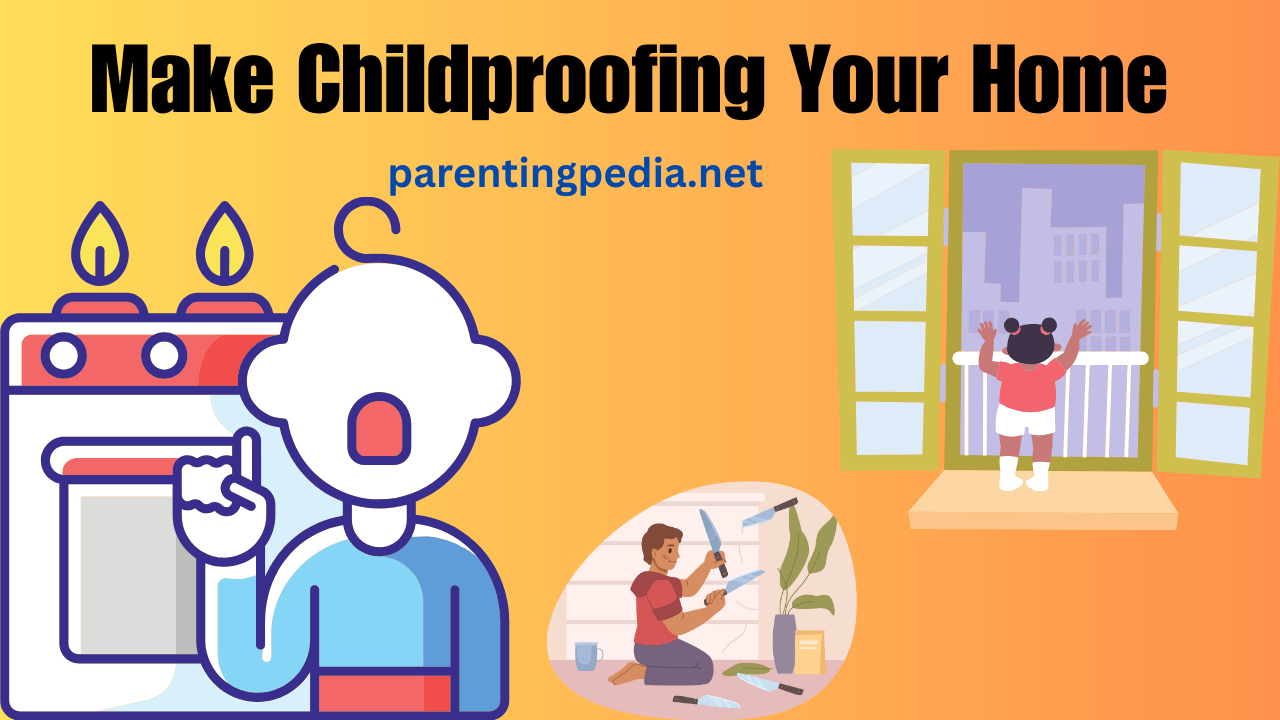Childproofing your home is a mission-critical task that every parent must tackle. It’s not just about protecting your belongings; it’s about ensuring the safety and well-being of your little ones. In this guide, we’ll cut through the clutter and get straight to the essentials. No corporate jargon, just straightforward advice to help you proof every nook and cranny of your home against potential hazards.
FAQ: Childproofing Demystified
Q1: Where do I start with childproofing my home? A: Begin by assessing each room for potential dangers. Look for sharp edges, loose cords, unsecured furniture, and access to harmful substances.
Q2: What are the key items needed for babyproofing? A: Safety gates, cabinet locks, outlet covers, furniture anchors, and window cordless coverings are must-haves.
Q3: How do I secure heavy furniture to the wall? A: Use furniture anchors to tether large items like bookshelves and dressers securely to the wall. This prevents them from tipping over and causing injury.
Room-by-Room Spartan Guide to Childproofing
1. Living Room
- Install safety gates to keep your child safe from stairs or off-limits areas.
- Secure heavy furniture to the wall to prevent tipping accidents.
- Use cordless window coverings to eliminate the risk of entanglement.
2. Kitchen
- Lock cabinets and drawers containing sharp objects, cleaning supplies, or utensils.
- Keep small kitchen appliances out of reach.
- Use stove knob covers to prevent accidental burns.
3. Bathroom
- Store medications, toiletries, and cleaning products in locked cabinets.
- Install safety latches on toilet lids to prevent drowning hazards.
- Keep electrical appliances away from water sources.
4. Nursery
- Anchor furniture like changing tables and dressers.
- Use safety latches on drawers containing small items.
- Ensure that the crib meets safety standards.
5. Bedroom
- Secure heavy furniture and dressers to the wall.
- Use window cordless coverings.
- Keep small items like jewelry and accessories out of reach.
6. Home Office
- Store sharp objects, cords, and small items in locked drawers.
- Use outlet covers to prevent electrical hazards.
- Secure heavy furniture and bookshelves.
7. Laundry Room
- Store cleaning supplies, detergents, and other chemicals out of reach.
- Keep the laundry room door closed when not in use.
Spartan Tips for Childproofing Success
- Safety Gates: Install safety gates in key areas of your home to keep your child within sight and out of reach of potential dangers.
- Furniture Anchors: Anchor heavy furniture like bookshelves and dressers to the wall. This prevents tipping accidents that could injure your child.
- Cordless Window Coverings: Eliminate the risk of entanglement by using cordless window coverings in every room of your house.
- Safety Latches and Locks: Use safety latches and locks on cabinets and drawers to keep dangerous items out of reach.
- Outlet Covers: Install outlet covers to prevent children from inserting objects into electrical outlets.
- Door Knob Covers and Locks: Use door knob covers and locks to restrict access to rooms with potential hazards.
- Secure Heavy Furniture: Tether heavy furniture to the wall to prevent tipping accidents.
- Temperature Control: Adjust the temperature of your water heater to prevent burns. The American Academy of Pediatrics recommends keeping it below 120 degrees Fahrenheit.
- Window Covering Safety: Visit windowcoverings.org for a free repair kit to address the dangling pull cord hazard. Contact the Window Covering Safety Council at 800-506-4636 for assistance.
- Smoke and Carbon Monoxide Detectors: Ensure that smoke and carbon monoxide detectors are installed and functional in every room of your home.
FAQs Continued
Q4: How do I secure a home office with a child? A: Keep sharp objects, cords, and small items in locked drawers. Use outlet covers and anchor heavy furniture to the wall.
Q5: How do I prevent burns in the kitchen? A: Adjust your water heater to a safe temperature and use stove knob covers to prevent accidental burns.
Q6: What’s the risk of window blind cords? A: Window blind cords can pose a strangulation risk. Use cordless window coverings or visit windowcoverings.org for safety kits.
Q7: How do I keep children safe from drowning in the bathroom? A: Install safety latches on toilet lids and never leave a child unattended in the bathroom.
Pros and Cons of Childproofing
Pros:
- Peace of Mind:
- Pro: Knowing that your home is childproofed provides peace of mind, allowing you to focus on spending quality time with your child without constant worry.
- Prevention of Accidents:
- Pro: Childproofing helps prevent accidents and injuries, reducing the likelihood of falls, burns, and other common household hazards.
- Early Independence for Your Child:
- Pro: A childproofed environment allows your child to explore and develop independence in a safe space, fostering their curiosity without compromising safety.
- Long-term Cost Savings:
- Pro: Investing in childproofing measures early on can save you money in the long run by preventing accidents that may lead to medical expenses.
- Educational Opportunity:
- Pro: Involving your child in the childproofing process can be educational. Teaching them about safety and potential hazards instills good habits from an early age.
- Compliance with Safety Standards:
- Pro: Following childproofing guidelines ensures that your home meets safety standards recommended by organizations like the American Academy of Pediatrics.
Cons:
- Initial Cost and Effort:
- Con: Childproofing may require an initial investment in safety gates, cabinet locks, and other safety devices. It also demands time and effort to install these measures effectively.
- Aesthetic Impact:
- Con: Some childproofing items, such as safety gates and furniture anchors, may have an impact on the aesthetic appeal of your home. However, the safety of your child should be the top priority.
- Regular Maintenance:
- Con: Childproofing measures may require periodic maintenance and adjustments as your child grows and becomes more curious. This can be an ongoing commitment.
- Potential Resistance from Older Children:
- Con: Older children may resist certain childproofing measures, feeling that they are restrictive. Balancing safety with a child’s need for independence can be a delicate task.
- Inconvenience for Adults:
- Con: Childproofing measures can be inconvenient for adults, requiring additional steps to access certain areas or use specific items within the home.
- Not Foolproof:
- Con: Childproofing measures are not foolproof. Vigilance and supervision are still crucial to ensure your child’s safety, especially as they grow and become more adventurous.
Final Thoughts: Make Childproofing Spartan, Not Complicated
Childproofing your home doesn’t have to be a daunting task. With a Spartan mindset and a clear checklist, you can systematically eliminate potential hazards from every room. Remember, simplicity is key, and the goal is to create a safe environment where your child can explore and grow without unnecessary risks. So, anchor that furniture, lock those cabinets, and keep your home a fortress of safety for your little one.
Remember, the greatest reward of parenting lies in watching
your children soar with love and confidence.
Till then keep smiling and be happy ?
? Worth Reading ?
- Best of the web, when you’re a teen, asks for non-alcoholic beer and more
- Choosing the Best Musical Instrument for Children to Learn
- Finding Balance Becoming a Screen Smart Family
- When Life Sucks: A Conversation with Psychiatrist and Comedian Dr. Jo Prendergast
- Getting kids to talk about their feelings
- The case for banning corporal punishment of kids
- How Parents Can Help Kids Make Good Friends
- 13 Reasons Why? What Every Parent Needs to Know
- How to Get Your Teenager Off the Couch
- The Two Most Important Things You Can Say to Your Child
- 10 Tips to Help Your Teen Out of the Procrastination Trap
- Is your child being bullied, how parents can help?
- Taking care of emotions a guide for parents and their kids
- Getting Involved Parents Making a Difference
- How to manage your child’s self-criticism

